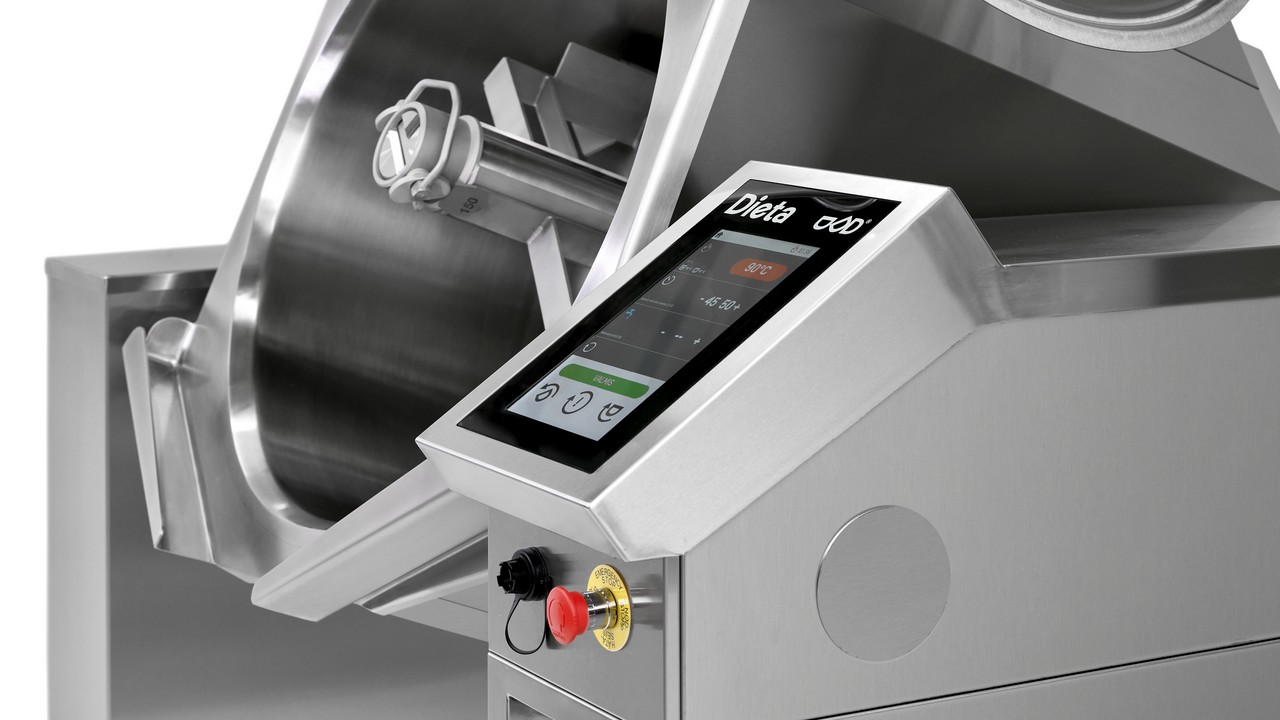In today’s high-volume commercial kitchens, efficiency isn’t just about speed—it’s about optimizing energy use, standardizing cooking processes, and maintaining consistent food quality. Automated mixing kettles with indirect heating are leading the way in this transformation. These kettles deliver superior results by combining extremely precise temperature control, high-speed mixing, and automated cooking programs while significantly reducing energy consumption.
The Efficiency Advantages of Indirect Heating
Indirect heating in mixing kettles uses a pressurized steam jacket around the kettle to distribute heat evenly. This prevents direct contact between the heat source and food and ensures gentle and consistent cooking.
Indirect heating with pressurized steam ensures uniform heat distribution on the kettle surface. This eliminates the need for energy-intensive reheating cycles common to indirect heating systems, reducing energy waste.
These kettles are typically better insulated, which helps them retain heat more effectively. Insulated design reduces the amount of energy needed to maintain a consistent cooking temperature, further boosting energy efficiency.
The Power of Precise Temperature Control
One of the standout features of automated mixing kettles with indirect heating is their ability to offer extremely precise temperature control. This precision, further enhanced by solutions like Dieta’s Genier 360°Sense, which presents something unique to the world of mixing kettles: wireless core temperature measurement, ensures that the system can monitor the internal temperature of the food with pinpoint accuracy. This reassures chefs that their dishes will always be perfectly cooked, while also optimizing energy usage.
Wireless core temperature sensors enable the kettle to adjust its heating automatically based on real-time data. This ensures that only the exact amount of heat necessary is applied, reducing energy waste.
- Reduces Heat Fluctuations:
Direct heating systems often cycle between high and low heat, leading to inefficient temperature fluctuations and energy use. In contrast, indirect heating systems – guided by precise temperature data – maintain a stable temperature, resulting in more efficient energy consumption.
Precise control reduces the need for reheating or overcooking, which is common in less accurate systems. The system avoids unnecessary energy spikes by consistently maintaining the target temperature, further increasing overall efficiency.
Automated Cooking Programs: Boosting Efficiency and Standardization
Another critical factor in boosting energy efficiency is the integration of automated cooking programs. These pre-programmed settings standardize the cooking process, ensuring that each dish is cooked exactly as needed, with minimal energy waste.
- Consistency Across Batches:
Automated programs standardize heating and mixing times, ensuring consistent results. This consistency reduces the need for adjustments, further optimizing energy use.
Automated cooking programs eliminate human error, ensuring that food is never overcooked or undercooked. By following precise, pre-set instructions; kitchens can reduce wasted energy from unnecessary reheating or temperature adjustments.
Each cooking process is optimized for efficiency. By following set programs, the system can ensure that energy is used only when necessary, minimizing excess consumption during slow periods or when the kettle could otherwise be idle.
High Mixing Speeds
Regarding automated mixing kettles, high mixing speeds and the versatility of specialized mixing tools offer more than just productivity benefits—they are potent contributors to energy efficiency. By combining faster mixing with the ability to adapt the tool to the specific needs of each dish, these kettles empower chefs to optimize the cooking process, reducing energy use while delivering consistent results.
- Quicker Heat Distribution:
Faster mixing ensures that heat spreads evenly throughout the food, allowing the heating system to work more efficiently. This reduces the time needed to bring the kettle to the desired temperature, shortening cooking times and directly translating into lower energy consumption.
High-speed mixing keeps the food in constant motion, preventing it from settling or sticking to the sides of the kettle, which can lead to uneven heating and energy waste. Maintaining optimal mixing conditions minimizes energy loss, and the kettle operates efficiently.
The higher speed ensures that food is consistently mixed and cooked, eliminating the need for multiple batches or corrections. This improves food quality and saves energy by reducing the need for extended or repeated cooking.
The versatility of specialized mixing tools further boosts energy efficiency.
- Tailored Mixing for Specific Recipes:
Using the right mixing tool for the job ensures that the food is mixed efficiently and effectively, reducing the time needed for proper heat distribution. For thicker foods, powerful stirring tools ensure heat reaches all areas of the batch, while more delicate mixers handle lighter, liquid-based recipes with care, preventing energy wastage.
Specialized tools avoid overmixing, which can lead to additional energy used to correct texture or temperature imbalances. By using the right tool, the mixing is done efficiently from the start, saving time and energy.
- Maximized Heat Distribution:
Versatile mixing tools ensure heat is distributed evenly throughout the food. This prevents the formation of hotspots that require more energy to fix, ensuring a more energy-efficient cooking process overall.
Why Automated Mixing Kettles with Indirect Heating are the Future of Energy-Efficient Kitchens
In professional kitchens, where energy use and food quality are closely monitored, automated mixing kettles with indirect heating is a smart investment. Their precise temperature control, automated cooking programs, and high-speed mixing ensure energy is used efficiently without sacrificing food quality, potentially leading to significant cost savings.
Real-time temperature monitoring and automated cooking programs reduce energy waste by ensuring the kettle only uses the exact amount of heat needed.
High-speed mixing speeds up cooking by distributing heat more evenly and quickly, while automated programs standardize cooking times and prevent overcooking.
Indirect heating systems provide even, gentle heat, which improves food quality and reduces the risk of burning or undercooking.



